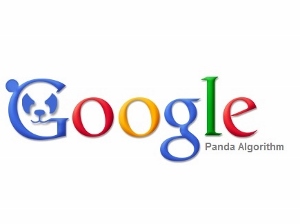
You Gotta Love a Panda!
Those of you who are aware of the various “goings on” in computer land, which also includes our smart phones and tablets, will be aware that our friend Google is full of its own idiosyncrasies.
All the clever people who write software come up with some incongruous names for their handy work. Just think of the Google’s Android operating system that produces updates delectably identified by all kinds of yummy treats such as Ice-cream Sandwich, Jelly Bean, Kit Kat and so on.
This almost irreverent naming of their clever products also embraces search engines, particularly those mysterious algorithms which webmasters keep talking about and the SEO crowd blames for all the ranking mishaps and reasons to make more money out of you by optimising your web sites so that your “findability” is restored if not improved. There their choices have been exotic or unusual creatures. The dreaded Penguin appeared many moons ago and caused all kinds of havoc but now we have a new friend to contend with. A cuddly, loveable Panda.
And this is good news. I think we all like pandas but what is so special about this one? I’ll backtrack a little to put you in the picture.
Google’s Panda update has been one of the most talked about algorithmic updates by SEOs and webmasters since it launched in February 2011. March 25, 2014 was the day the patent document describing Panda was granted. It was written by Navneet Panda, which is why it was named Panda, and Vladimir Ofitserov of Google. The patent application was filed on September 28, 2012, well after Panda was released into the Google search ranking world.
So is it really cuddly like the name suggests? Well, for all of you who run small businesses and enterprises represented by web sites that are well out of the majors league it certainly is great news. Panda is designed to look after the modest sized sites, rather than those that run into the hundreds or thousands of pages. There are times when I have felt quite frustrated by those sites. The pages do not represent prime content but usually serve to use all the tricks of the trade, such as page link structuring, in an attempt to maximise ranking for the domain.
Google’s Matt Cutts spoke at the Search Marketing Expo in March, saying that Google was working on the “next generation” of Panda that would be softer and more friendly to small sites and businesses. Cutts explained that this new Panda update should have a direct impact on helping small businesses do better.
One Googler on his team is specifically working on ways to help small web sites and businesses do better in the Google search results. This next generation update to Panda is one specific algorithmic change that should have a positive impact on the smaller enterprises. In the past, Google’s updates may have felt somewhat unjust to some smaller affiliate sites and there has been much talk of the magical protection of the big brand. I have heard complaints from organisations with pages of in-depth, rich content, losing out to big brands with a page containing only a short sentence on it.
However I have serious reservations in blaming that type of differential. Short and concise sentences packed with quality content have never failed in my experience.
Perhaps this new Panda 4.0 update is in response to these sorts of complaints. It seems that now, big name brands, as well as the smaller businesses, need to consider how information rich all of their pages and directories are. If they don’t, then they are in danger of joining the Panda 4 ‘losers list’.
And indeed the various “metrics” organisations have been hard at work producing lists of winners and losers. From an Australian point of view it is unfortunate that only American companies have been included to populate these lists; this makes it difficult to provide you with a local flavour but names with which I am familiar with leave little doubt that the mammoth sites, which lack quality content, have certainly crashed in ranking. Equally, smaller sites carrying high quality content have risen dramatically in their ranking.
Some of the losers from Searchmetrics initial analysis were:

Some of the winners were:

The Yellow Pages ranking change seems to be consistent with the old gag: “Great cast but terrible plot”.
The lists I have shown here are just a very small sample of the total measured results but they do demonstrate some of the drastic changes brought about by this algorithm.
I realise some of these names will not mean much to you but the variation in ranking is clearly demonstrated. It turns out that the eBay results, which also dropped 33%, may be uncertain as the company was actually changing its web site structure at the time. Be that as it may the results speak for themselves. If you are really interested browse some of these sites yourself to get a feel for the difference in site structures and content.
It is worth remembering that these results are based on a sample of search terms. The only way to really know if any update has hurt or helped you is to look at your search-driven traffic from Google, rather than particular rankings or lists like this which have become popular after Google updates.
I would be very interested to hear from you if you believe your ranking has changed noticeably in the last few months. It appears that due to the great upsurge of webmaster queries Google has decided not to publish any of their future Panda update periods so it would pay to keep an eye out for yourself. Let us hope that Google sticks to its promise which should lift smaller sites into greater prominence for the same grouping of search terms.

AccomNews is not affiliated with any government agency, body or political party. We are an independently owned, family-operated magazine.





